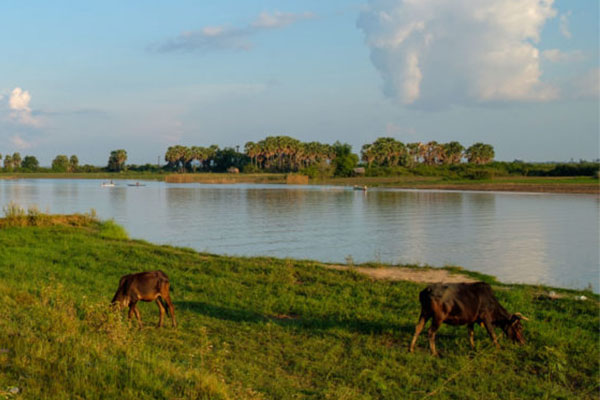
Unseen and Unrecognized: Allocating Water to Nature in River Systems
IUCN's Rebecca Welling explains the importance of accounting for nature's needs in water planning.
Water for nature is too often sidelined in discussions around built water infrastructure development and subsequent water allocation needs. With increasing demands for food and energy production from a growing global population, many countries look to engineered solutions to bring them water, food and energy security.
When we introduce multiple demands on a natural system, river flow is treated like a tangible commodity that is bought, sold and allocated to users. The result is often over-allocation, exploitation and conflict between users. So where does nature feature in these discussions and what happens to its needs when water is allocated to the variety of competing demands?
River systems are, however, often governed by contradictory rules and mechanisms shared between a range of institutions under different mandates. So it’s hard to understand who gets what when water is allocated often inadvertently. This is a nexus challenge; trying to balance the different demands and trade-offs so that everyone wins. It’s important to explore these trade-offs, looking at how water is used in the two systems and to identify both the positive and negative implications.
Alteration of natural river flows does provide many net benefits to societies and economies. Often though, the true impacts and costs incurred from the alteration of natural river flows are unknown.
Based on global evidence, it’s clear that we’ve poorly managed many of our engineered interventions by prioritising certain demands to the detriment of others. Examples exist worldwide where major rivers no longer reach the sea due to mismanagement of river flows. The Indus no longer reaches the ocean at the port of Karachi. The Aral Sea, once the world’s fourth largest inland water body, is now one-tenth of its original size, the Amu Darya River no longer reaches its shores. With these examples it is sometimes hard to see the benefits of engineered infrastructure interventions to our natural river systems. And there are many more examples.
However, we must face reality. Globally, hundreds of dams are being built along our waterways, and 100s more are in the pipeline and planning stages. In the Mekong for example, possible future plans include up to 90 dams to be built along the main river and tributaries over the next 50 years to support economic development in the region. We must therefore learn from past experiences and share lessons, case studies, and knowledge on how to better manage this engineered infrastructure in the future, in harmony with our natural river systems. (See IUCN’s infographic ‘Environmental Flows‘.)
Practically, we can approach these projects, as well as existing infrastructure, with a nexus lens – to service water, energy and food requirements for a hungry and rapidly expanding world while balancing this with water for nature to ensure sustainability, climate change resilience and disaster risk reduction. Nature needs to be at the centre of nexus discussions. To put it there we need improved knowledge, data and tools to demonstrate the trade-offs within our current system as well as climate change impacts and how this will affect flows. If you decide to allocate water away from nature you need to understand what you are losing – in the short and long term.
Research and dialogue needs to work with infrastructure development plans to inform the operational management of dams to reduce the negative impacts on the natural system and societies downstream. We need to better understand how much water we can allocate away from nature before we hit a tipping point and start causing irreparable damage. In this way, adjustments to engineered operations can favour allocating water back to nature – investing in ecosystem services and natural infrastructure.
This post originally appeared on IUCN Water’s blog.
Cover photo by Thomas De Cian.
Related Projects

